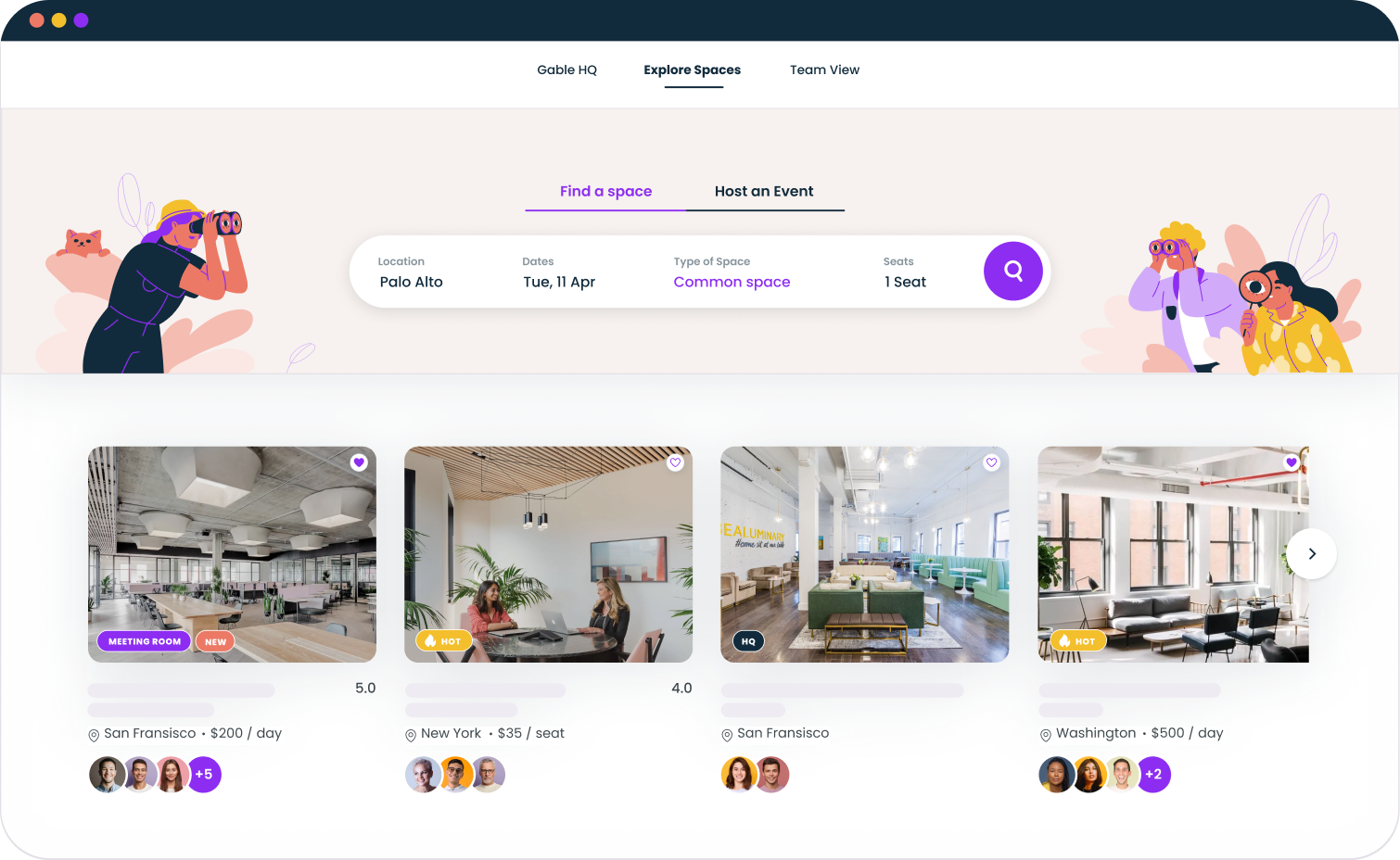Managing a distributed team means navigating challenges that never existed in traditional offices. When your entire team works from different physical locations, the informal coordination that happened naturally in a physical office simply vanishes. No more quick desk drop-bys to clarify priorities. No more reading body language in the same room during team meetings.
But here's what experienced distributed team leaders know: with the right systems and habits, remote teams can outperform colocated ones. The key is replacing what offices provided with intentional practices designed for how distributed work actually functions. This represents a fundamental shift in how we think about team building and collaboration.
This guide offers practical tips for managing distributed teams day-to-day. For strategic considerations like compensation philosophy and organizational design, see our guide on distributed workforce best practices. For foundational concepts, start with what is a distributed workforce.
Set clear expectations from day one
Ambiguity is the enemy of distributed teams. When remote employees can't casually ask a colleague for clarification, unclear expectations create confusion and duplicated effort.
Document everything that matters. Role responsibilities, project deliverables, quality standards, and deadlines should all exist in writing where the entire team can reference them. This documentation becomes the single source of truth for your distributed workforce.
Be explicit about communication norms. Which communication platforms serve which purposes? When should someone use Microsoft Teams versus email versus a project management tool? What response times are reasonable for different communication styles and message types? Distributed teams rely heavily on written communication, so establishing these norms prevents constant friction.
Define working hours and availability expectations. Time zone differences make this especially important. Set team goals that connect individual work to broader objectives so distributed employees can make autonomous decisions without waiting for direction.
Master asynchronous communication
Distributed teams that try to operate synchronously burn out fast. When your team spans time zones, expecting real-time responses means someone's always working at inconvenient hours. The best distributed team leaders default to asynchronous communication and treat synchronous time as precious.
Write to be understood without follow-up questions. Every message should include enough context that the recipient can respond fully without back-and-forth. Front-load the important information so busy colleagues can quickly assess priority.
Use video messages for complex topics. Tools like Loom let you explain nuanced issues with screen sharing, combining the clarity of video calls with async flexibility. Create documentation habits that enable asynchronous collaboration. Meeting notes should capture decisions so absent team members stay on the same page. Project updates should live in shared spaces like Google Drive rather than scattered across email threads.

A structured onboarding process is critical when new hires can't learn by watching colleagues. Our guide covers everything from preboarding to building early relationships remotely.
Read more →
Run effective virtual meetings
Video conferencing has become the default for distributed team meetings, but too many teams simply replicate in-person meeting habits online. Virtual meetings require different approaches.
Be ruthless about meeting necessity. Before scheduling, ask whether this could be an async discussion instead. Eliminating unnecessary meetings reserves video calls and video conferencing tools for conversations that genuinely benefit from real-time interaction: complex problem-solving, sensitive discussions, and relationship-building.
Design meetings for engagement. In virtual teams, participants easily disengage. Combat this by keeping meetings short, having clear agendas, and building in participation moments. Record important meetings for absent team members spanning time zones, and start with brief personal connection to help remote workers feel connected as humans.
Build regular check-in rhythms
Without the ambient awareness of shared office space, distributed team leaders need structured touchpoints. Regular check-ins prevent small issues from becoming big problems.
Hold weekly one-on-ones with each direct report focused on challenges, growth, and wellbeing rather than status updates. Create space for other team members to raise concerns they might not share in group settings. Regular check-ins build the trust that enables distributed employees to work autonomously.
Run weekly team syncs focused on coordination: what's each person working on, where are blockers, what decisions need input. Transparent communication in these syncs prevents misalignment. Track progress visibly using project management tools so team leaders and team members alike can see what's moving forward. This visibility replaces the awareness that comes from overhearing conversations in shared office space.
Communicate effectively across time zones
Global teams face unique challenges around time zone differences. A few tips for making it work:
Identify and protect overlap hours. Most distributed teams have some window where all members are awake during working hours. Treat this as precious time for synchronous collaboration. Rotate meeting times so no single region consistently bears inconvenient hours.
Default to async for non-urgent matters. Train your team to batch messages and trust that colleagues will respond when online. Document decisions thoroughly so those asleep during discussions understand not just what was decided but why. Use collaboration tools that support async work: threaded discussions, scheduled messages, and collaborative documents.
Gable On-Demand gives your teams access to 20,000+ premium workspaces worldwide. Enable employees to work productively from anywhere and bring them together when it matters most.
Learn more →
Foster personal connection and team culture
Remote workers report higher rates of loneliness than office workers. Building team culture isn't optional; it's essential for engagement and retention. Strong company culture keeps distributed employees connected to something larger than their daily tasks.
Create space for non-work interaction through dedicated Slack channels, virtual coffee chats, and casual conversation time in meetings. Encouraging employees to share aspects of their personal life builds relationships that improve collaboration. Celebrate wins publicly so the entire team knows when distributed team members do great work.
Invest in in-person gatherings. Research shows that periodic face-to-face time significantly strengthens distributed team relationships. Quarterly offsites or regional meetups build trust that sustains virtual collaboration throughout the year.
Navigate conflict and feedback remotely
Difficult conversations are harder without in-person cues. Distributed teams face their own unique challenges when it comes to conflict resolution. You can't read body language through a screen, and written communication strips away tone.
Address issues promptly rather than letting misunderstandings fester. Choose the right medium: sensitive feedback usually needs video calls, not text. Be explicit about intent since written messages can seem harsher than intended.
Document performance conversations and establish performance metrics focused on outcomes. Traditional management relied on observing work in progress; distributed team management requires measuring outputs instead. Define what success looks like and evaluate based on results, not perceived effort.
Onboard new team members thoughtfully
The onboarding process matters even more in distributed environments. New hires can't learn by watching colleagues or build relationships through casual office interactions.
Start before day one with equipment, system access, and reading materials. Create comprehensive documentation for self-service learning covering processes, tools, and cultural norms. This supports knowledge sharing across the organization and reduces repetitive questions.
Assign an onboarding buddy beyond the direct manager who can answer informal questions and explain unwritten norms. Schedule deliberate relationship-building through video calls with key colleagues. Check in frequently during the first months since new remote employees may struggle silently rather than asking for help.
Choose and configure the right tools
Distributed teams rely heavily on technology to stay connected. The right collaboration tools make remote work seamless; the wrong ones create constant friction.
Consolidate where possible rather than collecting point solutions for every function. Establish clear purposes for each tool and document which communication platforms serve which purpose. Configure tools to support distributed workflows by adjusting notification settings for async-first communication.
The specific tools matter less than thoughtful implementation. Microsoft Teams, Slack, Asana, Notion, Google Drive—all work well for distributed teams when configured intentionally and used consistently. Invest in training so your entire team uses core platforms effectively.
Make distributed work sustainable
Remote workforce arrangements offer significant benefits: better work-life balance, eliminated commutes, and greater flexibility. But without boundaries, those benefits erode as work bleeds into personal life.
Model healthy boundaries as a leader. If you send emails at midnight, you signal others should too. Watch for burnout signals since distributed employees can maintain productivity while burning out. Pay attention to changes in communication style or declining engagement in team culture.
Encourage employees to create work-life separation, whether through dedicated workspaces, firm end-of-day boundaries, or periodic days working from a local coffee shop or co-working spaces to change scenery. Recognize the unique challenges of remote work openly and provide resources to address them.
The path forward
Managing distributed teams successfully isn't about recreating office dynamics online. It's about building new systems designed for how remote and distributed work actually functions.
According to Stanford research, hybrid work has no negative impact on productivity while dramatically improving retention. Distributed models give organizations access to a larger talent pool and the ability to hire top talent regardless of geography. The remote workforce isn't going away. Start with clear expectations, communicate effectively across distance, build genuine connection despite physical separation, and watch your successful distributed team thrive.
Managing distributed teams requires the right tools and strategies. Gable helps you source, book, and manage workspaces for distributed teams while gaining real-time data to optimize your workplace strategy.
Get a demo →





.svg)





.svg)
















.svg)












